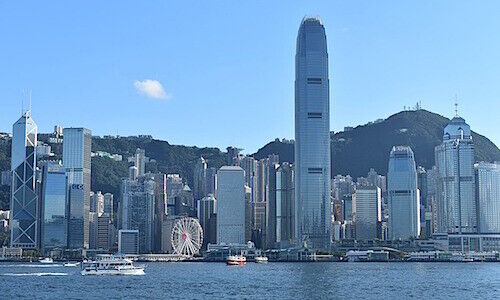Salman Ahmed: «The Risk Has Changed Dramatically»
The risks from a strong dollar and US trade tariffs are more imagined than real, Salman Ahmed, Chief Investment Strategist of Lombard Odier Investment Managers, writes on finews.asia.
During 2016 Lombard Odier Investment Managers felt confident to offer a positive view on emerging markets for the first time in more than five years. We took our cue from improving fundamentals; low market valuations; and what we considered to be manageable risks – China’s imbalances and debt burden, and the strong dollar. We recommended differentiating in favour of domestic ally-focused companies, but essentially identified emerging markets as a rare value opportunity in an expensive world.
Six months later, the fundamentals have continued to improve and the valuations are still reminiscent of the aftermath of the 1997-98 crisis, even after a good 2016. But one thing looks to have changed dramatically: the risk. The prospects for emerging markets look very different with President Donald Trump in the White House.
Especially Against China
Here, the warnings tend to focus on two things: the potential for further strengthening of the dollar, with its attendant risks of capital flight from the emerging world and balance-of-payments strains; and more aggressive U.S. protectionism, especially against China.
Much of the strong-dollar fear comes from expectations of what might happen in response to protectionism. Companies closing down manufacturing facilities overseas and relocating them in the U.S. to avoid new tariffs and taxes would, all else being equal, push the dollar up against its emerging-market peers.
These operations take months, however, and in the meantime the most likely outcome is a slowdown in domestic U.S. economic activity combined with higher cost-push inflation.
A Dilemma For the Federal Reserve
That would create a dilemma for the Federal Reserve, and while recent «Fedspeak» has been marginally more hawkish in response to the prospect of tax reform and fiscal stimulus, official statements remain noncommittal.
We believe it will remain cautious until it gets more clarity on these policies. President Trump wants the U.S. to grow at 4 percent per annum, too, and that’s another reason to let the economy run slightly hotter and the dollar slightly weaker than would otherwise be the case.
Policy clarity won’t come until 2018, and physical capital returning to U.S. shores probably won’t make an impact for another year or so after that – which suggests to us that a sharp dollar rally is unlikely in the shorter term. The threat of protectionism to global trade flows feels more clear-cut.
After Trump was elected, we argued that we were more likely to see «trade stagnation» than «trade reversal» under the new administration.
China Holds a Lot of U.S. Debt
While it’s true that both rhetoric and action have stepped up-alongside killing off U.S. engagement with the Trans-Pacific Partnership (TPP), we have heard calls to «speed up» renegotiation of the North American Free Trade Agreement (NAFTA), threats of border taxes, and a preference for bilateral over multilateral trade agreements - we stand by this view. Outright trade reversal would be characterised by a blanket tariff morphing into capital war between the U.S. and China. This is not imminent, in our view, not least because China holds a lot of U.S. debt.
Also, rather than broad-based protectionism we expect Trump’s administration to deploy something more sector-specific, responding specifically to the concerns of working-age white males without college degrees in «swing states» while lessening the risk of an asymmetric response from China.
That would leave some emerging-market sectors – and indeed entire economies – more at risk from than others. Goldman Sachs has noted that job losses in swing states have been highest in the machinery, autos, and the metal, wood, furniture, rubber, plastics, textiles and apparel industries. Our own work on export exposure to the U.S. would place semiconductors in Taiwan and Korea and auto parts in Mexico among the vulnerable.
Massive Real-Asset Investment
In any case, much of the fear associated with the U.S. retreating from global trade rests upon the rather outdated view that the emerging world’s catch-up growth is still based on massive real-asset investment, on the one hand, and high-volume manufacturing of cheap goods for rich western consumers, on the other. In fact, the next stage of growth centred on domestic demand and intra-emerging market dynamics is already happening.
Since 2000 the proportion of emerging markets exports that has stayed within emerging markets has doubled, to 40 percent, and since 2010, these domestic consumption has been a stronger driver of growth than trade. And this is just the start.
Financial Accident in China
While the U.S. has withdrawn from TPP, other countries are likely to continue negotiations. And simply connecting eastern and western China would be «globalisation», in terms of the markets that are linked together and opened up. The «One Belt, One Road» infrastructure development initiative proposed by China in 2013 to connect with the rest of Eurasia would transform global trade patterns and stimulate demand across these regions.
When you change your view of the world in this way, the end-game risk is not U.S. protectionism or a strong dollar at all, but rather a financial accident in China. Again, the fundamentals here have not deteriorated recently. China’s external debt position is strong and inflation has been returning, both of which should help to contain non-performing loan problems in the banking system while the authorities work them out. The authorities are also willing and able to act when necessary: the risk of capital outflows have already been severely blunted by heavy use of capital controls.
Climbing the «Wall of Worry»
Overall we expect emerging market assets to climb the current «wall of worry» over trade stagnation, while splitting into distinct winners and losers. When it comes to identifying the winners, the election of President Trump simply reinforces the principles that have been underpinning our emerging-market strategy for some time: focusing on quality companies and strong countries, where domestic demand is an important driver of growth, in order to capture long-term trends.
Should the U.S. adopt a very confrontational stance towards China we do see downside risks to current asset pricing. But even that would not de-rail «Globalisation 2.0» over the medium and long term. The emerging world is quitting the workshop of the rich, developed countries; it is becoming rich itself; it is consuming more of what it makes itself; and it is moving into the driving seat of trade and globalisation. If anything, the vote cast from the angry U.S. «Rust Belt» on November 8, 2016 will accelerate that trend.
This material does not constitute an offer or solicitation in any jurisdiction where or to any person to whom it would be unauthorised or unlawful to do so.



























